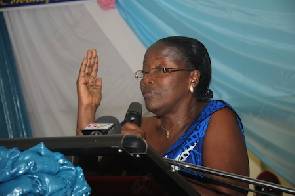 wakeup-world.com/2016/10/10/want-a-successful-public-school-system-look-to-finland-where-play-cooperation-and-little-homework-are-the-key-to-high-student-performance/wuw_paginate/disabled/
wakeup-world.com/2016/10/10/want-a-successful-public-school-system-look-to-finland-where-play-cooperation-and-little-homework-are-the-key-to-high-student-performance/wuw_paginate/disabled/
October 10th, 2016
America’s public school system is in crisis, with burned-out teachers and failing literacy rates, along with ongoing issues of bullying and violence. But the most telling sign of decay is our lackluster PISA, or Programme For International Student Assessment, ranking of U.S. high school students — which shows the U.S. stalled around 27th place in mathematics and 17th in reading. With all our standardized testing, long school days, mountains of homework and relatively high expenditure per student, we’re still falling behind.
In contrast, Finland has consistently ranked at or near the top in all three PISA competencies since 2000, placing first in science, second in math and third in reading in the 2006 survey. Curiously, the Finnish have an unorthodox — and seemingly counterintuitive — approach to education; an approach that some even view as a “slacker’s path” to academic success. And yet, however the Finnish system is viewed, its success is indisputable — and nations like the U.S. would do well to pay attention, and learn from their example.
In Finland, “Real Winners Do Not Compete”
Here in the United States, competition is so pervasive, we hardly notice it, let alone question whether it should have a place in the teaching our youth. But the Finnish see it differently. For them, equity in education is exceptionally important — and one of the main reasons why their students are successful.
“Since the 1980s, the main driver of Finnish education policy has been the idea that every child should have exactly the same opportunity to learn, regardless of family background, income, or geographic location. Education has been seen first and foremost not as a way to produce star performers, but as an instrument to even out social inequality.” [source]
Private schools don’t exist in Finland and there are no advanced placement classes. All but the most severely developmentally challenged students are integrated into standard classrooms. If a child is struggling academically, aids are on hand to work closely with the student. Finland doesn’t have a ranking system of best schools or teachers.
Their education policy doesn’t foster competition, but rather relies on cooperation. Finnish write Samuli Paronen sums it up with: Real winners do not compete.
Moreover, schools in Finland are healthy, safe environments for all children. Each student is provided with free school meals, straightforward access to health care, psychological counseling and personalized student guidance.
The children are also given time to be, well, kids — with ample time to play and exercise and explore. They are only in school about five hours a day — including their lunch break and a 15 minute recess every hour. And homework is rare before secondary school, and even then, it’s usually under 30 minutes per day. Standardized testing isn’t used, save for a single test given to high school students.
“Teachers in Finland spend fewer hours at school each day and spend less time in classrooms than American teachers. Teachers use the extra time to build curriculums and assess their students. Children spend far more time playing outside, even in the depths of winter. Homework is minimal. Compulsory schooling does not begin until age 7. “We have no hurry,” says school principal Kari Louhivuori. “Children learn better when they are ready. Why stress them out?”’ [source]
But critics claim the Finnish system wouldn’t translate well in a country as large and diverse as America. But Dr. Pasi Sahlberg, director of the Finnish Ministry of Educations’ Center for International Mobility, doesn’t think the U.S. should be so quick to dismiss the Finnish educational model as unworkable.
Economic Inequality is the Problem, Not Diversity
While Finland is more or less a homogenous country, it’s seen a twofold increase in foreign-born residents between 2000 and 2010. During that time, the country didn’t lose it’s educational edge. Where immigrants concentrated, the schools became much more mixed, and yet PISA scores remained high, notes Dr. Sahlberg.
“The problem facing education in America isn’t the ethnic diversity of the population but the economic inequality of society, and this is precisely the problem that Finnish education reform addressed. More equity at home might just be what America needs to be more competitive abroad,” writes Anu Partanen in “What Americans Keep Ignoring About Finland’s School Success”
As far as the sheer size and population of the U.S., Finland comes in at around 5.4 million people — about the size of Kentucky. Implementing a Finnish-style educational system at the state level is very doable. But it would take a shift in thinking, away from the competitive, marketplace mentality of education currently in place.
Another significant difference between the two countries is the training required to become an educator. “In America, where thousands of teacher positions in inner cities are filled by candidates with five or six weeks of summer training, no teacher in Finland is allowed to lead a primary school class without a master’s degree in education, with specialization in research and classroom practice, from one of this small nation’s eleven elite graduate schools of education.” [source]
It’s actually more difficult getting into teacher education than medicine or law in Finland. By 1979, school reformers required that each teacher earn a fifth-year master’s degree in theory and practice — with the state footing the bill. From that point forward, teachers were essentially granted equal status with doctors and lawyers. People began flooding teaching programs due to this newfound autonomy and respect.
Unlike in America, “teachers are not strait-jacketed by bureaucrats, scripts or excessive regulations, but have the freedom to innovate and experiment as teams of trusted professionals.” But it wasn’t always this way, and it needn’t be so in the U.S.
Says Linda Darling-Hammond, education professor at Stanford:
“Thirty years ago, Finland’s education system was a mess. It was quite mediocre, very inequitable. It had a lot of features our system has: very top-down testing, extensive tracking, highly variable teachers, and they managed to reboot the whole system.





